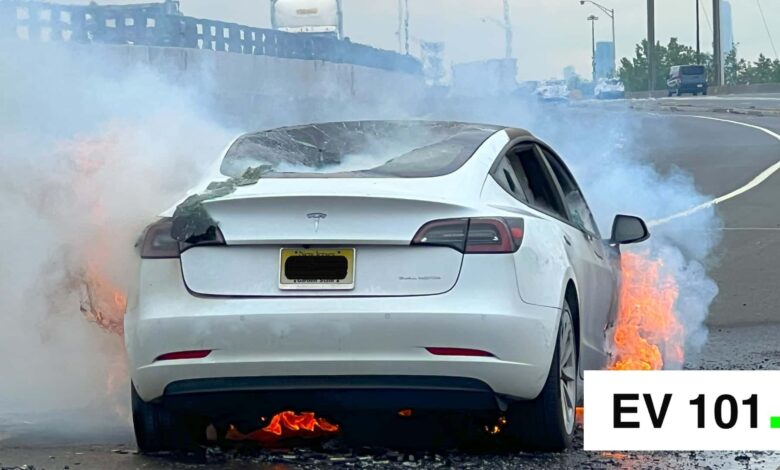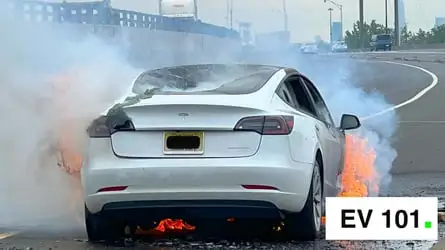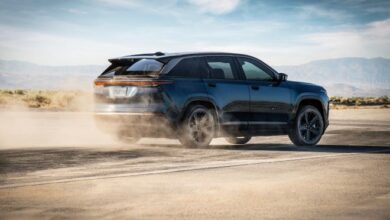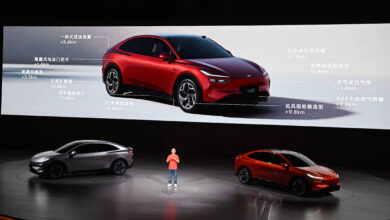How Much Of A Fire Risk Are Electric Vehicles?

Consider the “EVs are more prone to catch fire” myth busted, and the proof is all right here.

May 24, 2024 at 10:30am ET
News coverage—whether online, print or local TV—gravitates toward fires. When an EV story penetrates the mainstream, it’s often associated with them. Even someone who knows next to nothing about electric vehicles has probably heard about the Chevy Bolt recalls or encountered video of a burnt Tesla.
Do EVs cause more fire than a typical combustion vehicle? How safe are EVs when they do catch fire? Is fire a risk prospective EV buyers should worry about? Here’s what we know.
Electric vehicles do not catch fire than more combustion vehicles — and may do so a lot less often
Our available data sets on vehicle fires are varied and limited. But, broadly, studies show no evidence that EVs are more likely to catch fire than combustion vehicles. They appear to be doing so at a far lower rate.
EV Fire Safe in Australia studied vehicle fires from 2010 to 2020. The study concluded that 0.1% of combustion cars caught fire during that span compared to 0.0012% of EVs — one-tenth of a percent compared to one-thousandth.
According to The Guardian, EV-embracing Norway found combustion vehicles producing four to five times as many fires as EVs. A study by the Swedish Contingencies Agency for 2022 found that all fuel types produced 68 fires per 100,000 vehicles compared to 3.8 fires per 100,000 vehicles for EVs.
The number of EV fires should increase as more battery packs age and remain on the road. But those numbers would have to uptick dramatically to eclipse the number of fires in combustion vehicles.
But when EVs do catch fire, it can be a lot more dangerous
EVs may not catch fire as often as combustion vehicles. But when they do, it’s dramatically harder for fire departments (especially ones without the appropriate training and resources) to put them out.
Battery cells that catch fire can enter a condition called thermal runway. In this condition, the chemical reaction that sparks the fire becomes self-sustaining: heat releases energy, which releases more heat. The temperature rises dramatically, and it can be much harder to put out. EV fires release a cloud of flammable vapor that can explode and send jet-like flames.
EV fires can also reignite, sometimes long after the initial fire is extinguished. EV Fire Safe found that 13 percent of EV fires experienced reignition. The study logged one reiginition event 68 days after the initial fire. EV fires release a cloud of flammable vapor that can explode and send jet-like flames.
Water does extinguish EV battery fires. However, getting water directly to an EV fire can be challenging. The same casing that protects the pack from damage and elements can make the fire hard to access. And battery packs typically sit underneath the rest of the vehicle, further complicating the effort. Putting out an EV fire requires more time than a combustion engine fire and a lot more water.
A fire at Nissan’s Tennessee headquarters required 45,000 gallons of water to extinguish, multiple tankers worth and tens of times the amount usually required to snuff out a combustion engine fire.
Should fire be a significant concern if you’re buying an EV?
Probably not. EVs use lithium-ion batteries for the same reason many modern devices do: lithium-ion batteries can hold an impressive amount of energy in a small space. The trade-off is a small but non-zero risk that a faulty or damaged battery pack could catch fire.
Samsung infamously recalled its Galaxy Note 7 phone in 2016 due to faulty batteries causing fires. The same year, the U.S. Consumer Product Safety Commission recalled more than 500,000 hoverboards due to battery fires. The FAA bans lithium-ion batteries from checked airplane luggage so crew members can address potential fires inside cabins.
An FDNY release detailing the “dangers of lithium-ion batteries” did not mention the risk of electric cars despite a rapidly growing number of them. It did highlight vehicles like e-scooters and e-bikes, which have large batteries, are often charged irregularly indoors and are built by manufacturers who aren’t held to the same regulations, production standards and potential liability as auto manufacturers.
Read more



